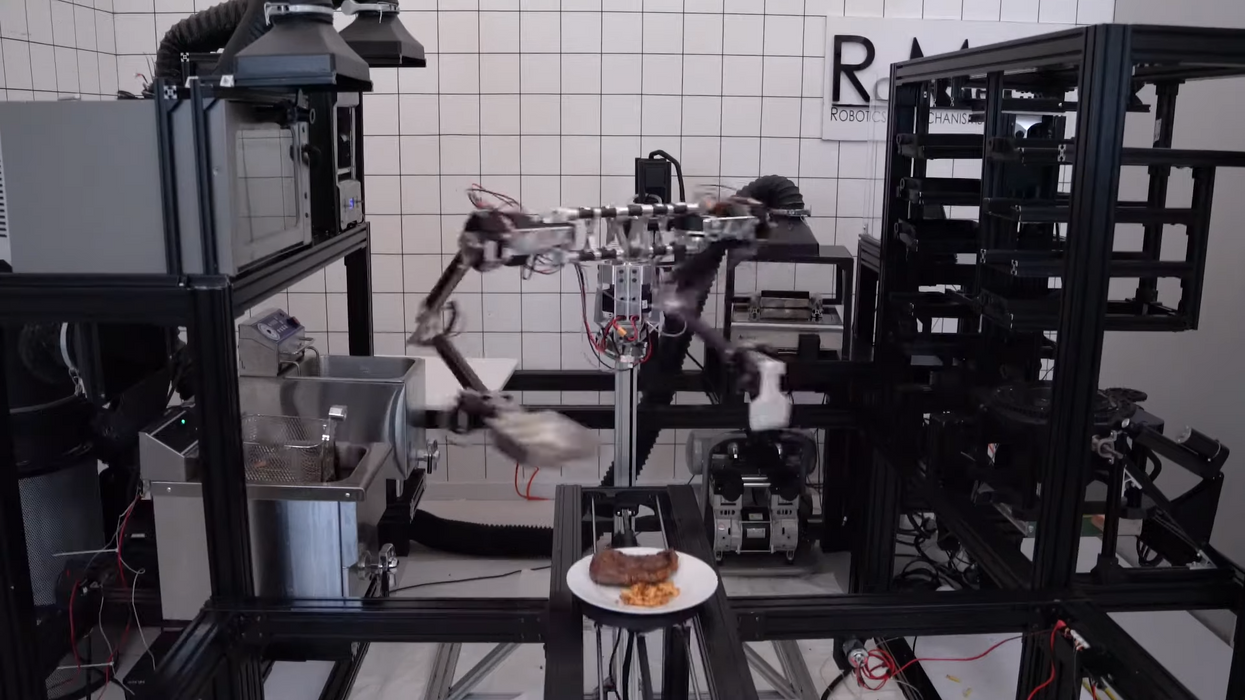YORI: A Hybrid Approach to Robotic Cooking

There seems to be two general approaches to cooking automation. There's the let's make a robot that can operate in a human kitchen because everyone has a human kitchen," which seems like a good idea, except that you then have to build your robot to function in human environments-which is super hard. On the other end of the spectrum, there's the let's make a dedicated automated system because automation is easier than robotics," which seems like a good idea, except that you then have to be willing to accept compromises in recipes and texture and taste because preparing food in an automated way simply does not yield the same result, as anyone who has ever attempted to Cuisinart their way out of developing some knife skills can tell you.
The Robotics and Mechanisms Lab (RoMeLa) at the University of California, Los Angeles, run by Dennis Hong, has been working on a compromise approach that leverages both robot-friendly automation and the kind of human skills that make things taste right. Called Project YORI, which stands for Yummy Operations Robot Initiative" and is also the Korean word for cooking," the system combines a robot-optimized environment with a pair of arms that can operate kitchen tools sort of like a human.
Instead of trying to mimic how humans cook," the researchers say, we approached the problem by thinking how cooking would be accomplished if a robot cooks. Thus the YORI system does not use the typical cooking methods, tools, or utensils which are developed for humans." In addition to a variety of automated cooking systems, the tools that YORI does use are modified to work with a tool-changing system, which mostly eliminates the problem of grasping something like a knife well enough to precisely and repeatedly exert a substantial amount of force through it, and it also helps keep things structured and accessible.
In terms of cooking methods, the system takes advantage of technology when and where it works better than conventional human cooking techniques. For example, in order to tell whether ingredients are fresh or to determine when food is cooked ideally, YORI utilizes unique chemical sensors," which I guess are the robot equivalents of a nose and taste buds and arguably would do a more empirical assessment than some useless recipe metric like season to taste."
The advantage of a system like this is versatility. In theory, those added robotic capabilities means it's not as constrained by recipes you could cram into a system built around automation. At the same time, it's somewhat practical-or at least, more practical than a robot designed to interact with a lightly modified human kitchen. And it's actually designed to be practical(ish), in the sense that it's being developed under a partnership with Woowa Brothers, the company that runs the leading food-delivery service in South Korea. It's obviously still a work in progress-you can see a human hand sneaking in there from time to time. But the approach seems interesting, and I hope that RoMeLa keeps making progress on it, because I'm hungry.